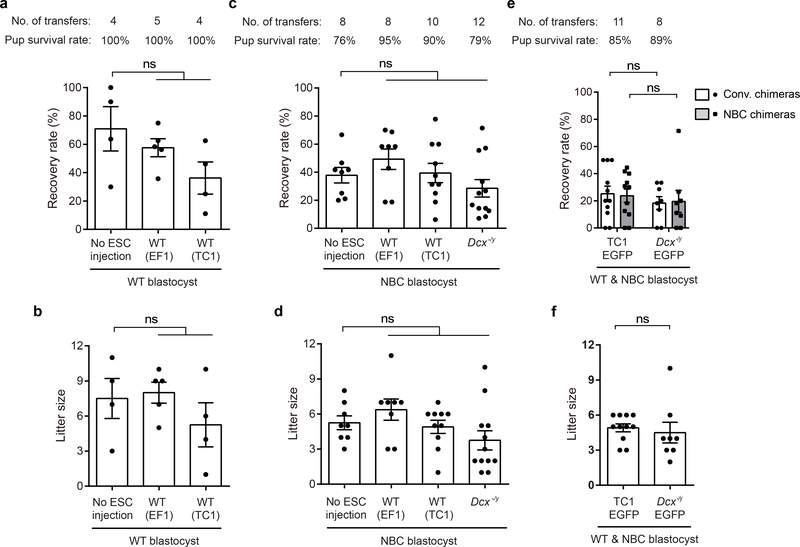Extended Data Figure 9. Rates of recovery, survival, and litter sizes across multiple pregnancies and ESC lines.
a, Average recovery rate (± SEM) of liveborn pups from WT blastocysts without ESC injection or injected with WT ESCs (EF1, TC1). ns, not significant, P>0.05 (one-way ANOVA with Tukey’s post hoc correction for multiple comparisons). Number of transfers (foster pregnancies) and pup survival rate at P0 is listed above graph. b, Mean litter size (± SEM) per foster recipient of WT blastocysts without ESC injection or injected with WT ESCs (EF1, TC1); ns, not significant, P>0.05 (one-way ANOVA, Tukey’s post hoc correction for multiple comparisons). c, Average recovery rate (± SEM) of liveborn pups from NBC blastocysts without ESC injection or injected with WT (EF1, TC1) or Dcx−/y ESCs. ns, not significant, P>0.05 (one-way ANOVA with Tukey’s post hoc correction for multiple comparisons). Number of transfers (foster pregnancies) and pup survival rate at P0 is listed above graph. d, Mean litter size (± SEM) per foster recipient of NBC blastocysts without ESC injection or injected with WT (EF1, TC1) or Dcx−/y ESCs; ns, not significant, P>0.05 (one-way ANOVA, Tukey’s post hoc correction for multiple comparisons). e, Average recovery rate (± SEM) of mice from mixed WT/NBC blastocyst transfers; ns, not significant, P>0.05 (unpaired, two-tailed t test). f, Mean litter size (± SEM) per foster recipient; ns, not significant, P>0.05 (unpaired, two-tailed t test). For experiments in e and f, mice were intercrossed to simultaneously generate WT or NBC blastocysts with or without DsRed.T3 expression (see Extended Data Figure 2a) and were injected with either TC1-EGFP or Dcx−/y-EGFP ESCs followed by transfer into fosters. Pups were then genotyped to determine whether they were WT or NBC blastocyst-derived.

